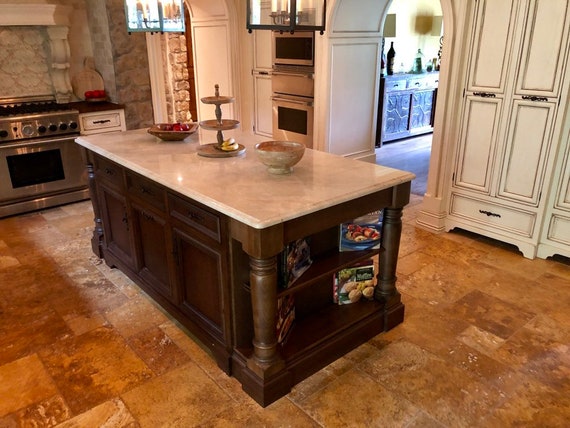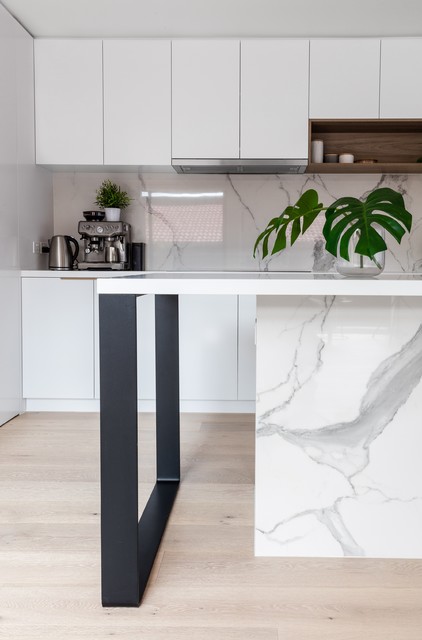The Relevance of a Sturdy Kitchen Island Leg in Developing a Practical Food Preparation Area
A durable kitchen area island leg offers as a fundamental component in establishing a functional food preparation atmosphere, providing necessary support for both the counter top and numerous kitchen area activities. As cooking areas advance right into multifunctional areas for cooking, dining, and socializing, the selection of products and design factors to consider for island legs becomes increasingly vital.
Advantages of Sturdy Island Legs
Supplying essential assistance, tough kitchen island legs play an essential function in enhancing the capability and longevity of kitchen area islands - kitchen island leg. These legs not just bear the weight of the kitchen counter and any extra items positioned on the island, however also add to the overall security of the structure. A well-supported cooking area island makes certain that it stays useful and upright, even under hefty use, which is especially essential in active kitchen area settings
Furthermore, sturdy island legs can boost the visual appeal of the cooking area. They offer a strong framework that can match different style styles, from modern to traditional. This versatility enables homeowners to personalize their cooking area islands according to personal preference while ensuring that the architectural honesty stays uncompromised.
Along with their supportive role, robust kitchen area island legs can additionally enhance safety and security. A steady island lowers the risk of accidents brought on by tipping or tottering, which is especially essential in families with youngsters or elderly individuals. Moreover, solid legs can promote a seamless circulation of tasks, enabling for efficient meal preparation and social communications within the cooking area room. Inevitably, spending in sturdy kitchen island legs is crucial for a useful and aesthetically pleasing cooking location.
Products for Kitchen Area Island Legs
When picking products for kitchen area island legs, durability and aesthetic allure are critical variables to think about,. The most common products include wood, steel, and crafted wood, each offering unique advantages.
Wood, such as oak, cherry, or maple, is a classic choice as a result of its stamina and ageless charm (kitchen island leg). It can withstand substantial weight and is immune to wear, making it ideal for high-use cooking area atmospheres. Additionally, wood can be stained or painted to enhance different kitchen designs
Metal legs, often crafted from stainless-steel or wrought iron, give a contemporary and commercial look. They are incredibly solid and can sustain considerable lots while being immune to wetness and heat, which is useful in a cooking area. Steel legs can also be easily cleaned up, improving their usefulness.

Layout Factors To Consider for Security
The option of products for kitchen area island legs directly affects the layout factors to consider for stability. When creating a cooking area island, it is critical to examine the weight-bearing capability of the i loved this chosen materials. Much heavier materials, such as strong timber or metal, normally provide better security, especially under the anxiety of day-to-day use.
Additionally, the leg design must include proper geometry to enhance stability. A larger base increases the assistance location, reducing the danger of wobbling or tipping. Factor to consider must also be offered to the height of the legs; disproportionate leg sizes can result in imbalance, compromising the overall security of the island.
In addition, the circulation of weight across the island is crucial. Guaranteeing that the leg placement lines up with the heaviest components, such as countertops and home appliances, will certainly even more enhance security.
Maintenance Tips for Longevity

Cleaning up is hop over to here another crucial element of maintenance. Depending upon the material of the legs-- whether wood, metal, or composite-- suitable cleansing techniques ought to be employed. For wood legs, a gentle wipe with a wet cloth and a suitable timber cleaner will certainly help preserve their surface. Steel legs might require a light polish to stop rust and preserve their appeal.
Additionally, tightening up bolts and screws frequently can ensure stability and protect against tottering. Consider reinforcing the legs with additional brackets or sustains to boost sturdiness if the kitchen area island experiences heavy use. Using a protective finish or sealant can protect versus wetness and discolorations, prolonging the life-span of the legs. By adhering to these upkeep ideas, house owners can guarantee their kitchen island legs stay robust and useful for years to come.
Choosing the Right Leg Style
Routine maintenance makes sure that kitchen area island legs continue to be tough and useful, but selecting the right leg style is similarly crucial for both visual appeals and support. The choice of leg style can substantially influence the total layout and consistency of your cooking area.

Performance is one more crucial facet. Thicker legs or those with a strong base can sustain heavier countertops and equipment, enhancing the island's utility. On the other hand, slender legs may produce a ventilated look, ideal for lighter layouts yet possibly much less encouraging.
Verdict
In recap, the importance of durable kitchen island legs can not be overemphasized in the development of a functional food preparation location. These legs offer necessary support, improve stability, and add to the general aesthetic of the cooking area.
A strong kitchen island leg offers as an essential component in developing a functional food preparation environment, providing needed support for both the counter top and different kitchen area activities.Giving necessary support, tough cooking area island legs play an essential role in boosting the functionality and durability of cooking internet area islands. Ultimately, spending in sturdy kitchen area island legs is important for a useful and visually pleasing cooking area.
Factor to consider should likewise be offered to the elevation of the legs; disproportionate leg sizes can lead to imbalance, jeopardizing the total stability of the island.
Wooden legs supply warmth and a traditional appearance, while steel legs provide a industrial and contemporary feeling.